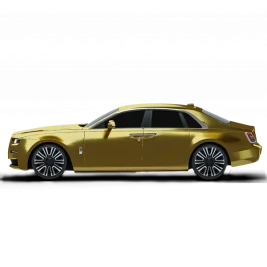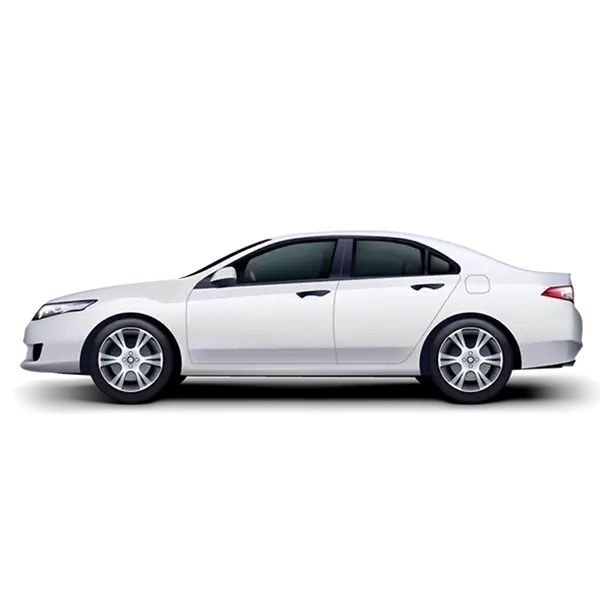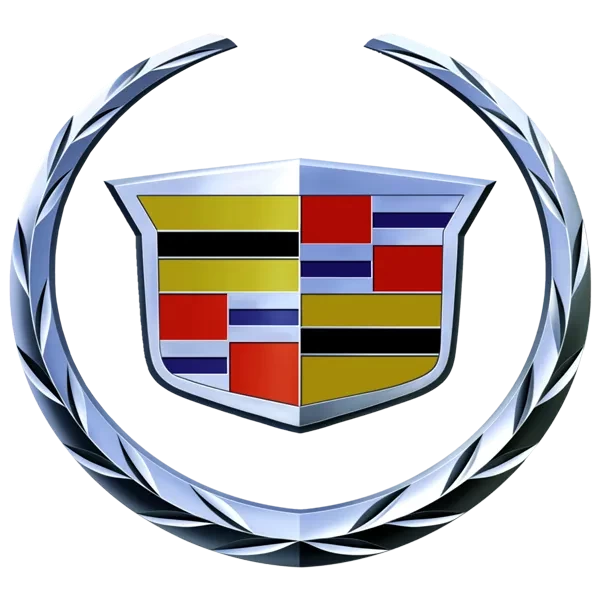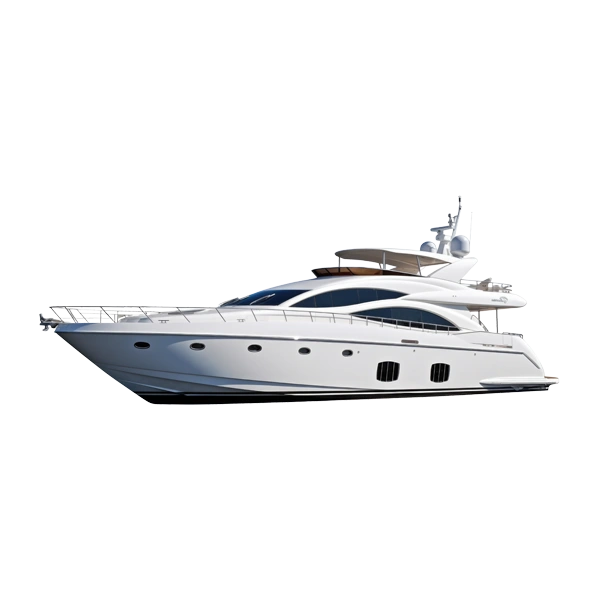18 Common Acura Problems and Solutions
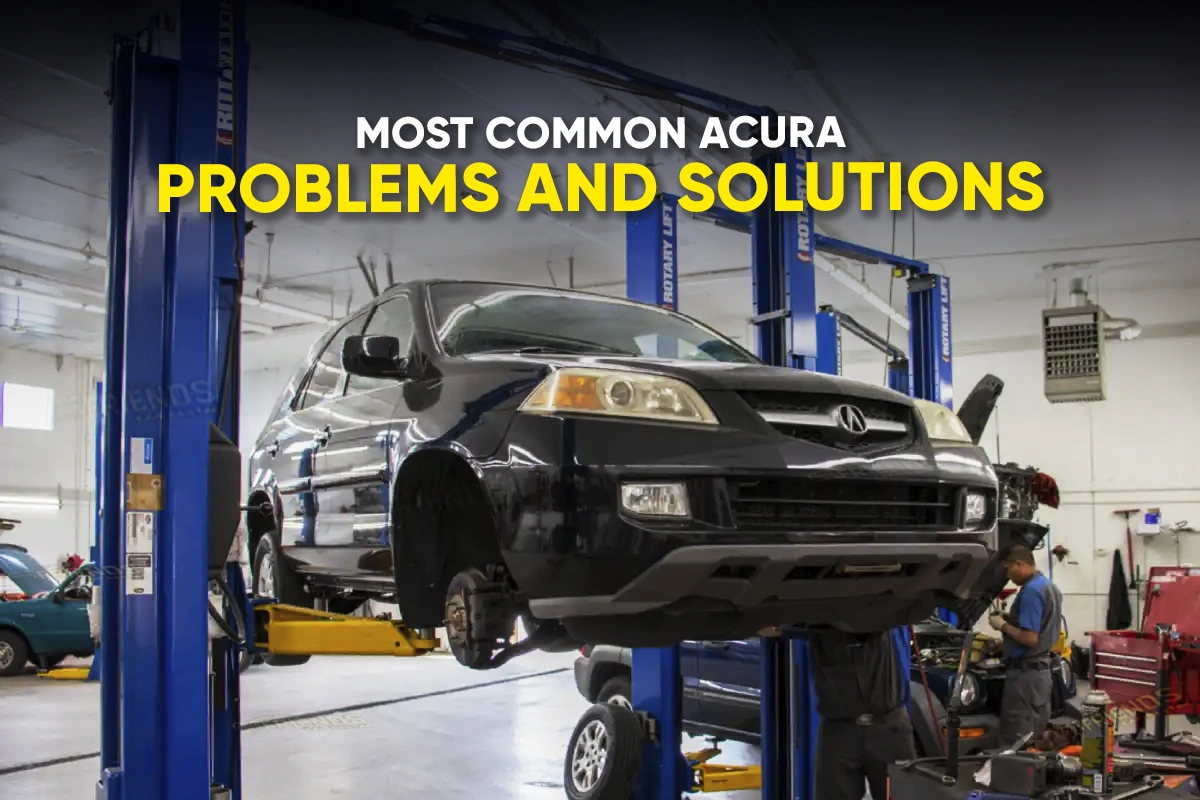
Searching for the most common Acura problems and solutions? This comprehensive guide details the 18 most recurrent Acura issues and their practical solutions, empowering you to maintain your car with confidence.
Auto enthusiasts celebrate Acura vehicles for their sophisticated blend of luxury, reliability, and precision-crafted performance. Acura cars are a premium choice on the UAE's diverse roads. However, even these meticulously engineered vehicles can encounter challenges, especially when faced with the Emirates’ extreme heat and demanding driving conditions.
Understanding these common Acura car problems and their effective solutions is crucial for every owner. By being proactive, you can avoid unexpected setbacks on the road & ensure a seamless and confident driving experience. Let’s explore the most frequent Acura issues and their fixes.
18 common Acura Problems and their solutions/fixes:
Engine Idle Speed is Erratic or the Engine Stalls: Run a professional diagnostic scan; clean the throttle body and idle air control valve; replace a faulty sensor.
Connecting Rod Bearing Wear and Seizure: Take the vehicle to a dealer for factory recall service; replace the engine or other affected components.
Fuel Pump Failure, Leading to Engine Stalls: Check for factory recalls; take the vehicle to a dealer for a free fuel pump replacement.
EGR Valve Failure in V6 Engines: Perform a professional cleaning of the EGR valve and intake manifold port; replace the EGR valve if cleaning does not resolve the issue.
Faulty Fuel Injectors Causing Misfires: Get a professional fuel system cleaning; replace the faulty fuel injector or its seal; have a mechanic check the wiring and connectors.
Erratic, Jerky, or Hesitant Transmission Shifting: Perform TCM software update; do a professional fluid flush; perform a diagnostic inspection for failing solenoids.
Check Engine and D4 Lights Flashing: Stop driving and have the vehicle towed to a mechanic; perform a diagnostic scan to find specific error codes.
Shudder or Vibration at Certain Speeds: Get a TCM software update from a dealer; perform a transmission fluid flush and fill; replace the torque converter if the problem persists.
Vehicle Stability Assist (VSA) Concerns: Check tire pressure; get a diagnostic scan to identify the fault code; replace a faulty sensor or the VSA module.
Sticky Steering or Momentary Increase in Steering Effort: Take the car to an authorized dealer; get the electronic power steering gearbox replaced under recall.
Brake Light Issues Due to a Short Circuit: Check the brake light fuse; have a mechanic diagnose the electrical system to find and repair the short circuit.
Carbon-Fiber Brake Rotor Cracking (NSX): Regularly inspect the rotors for structural cracks; replace rotors immediately if cracks reach the edge or are wide enough to catch a fingernail.
Problems with the Auto Idle Stop Feature: Have the battery and charging system professionally tested; replace a weak battery; get a software update from a dealer.
Issues with Infotainment Systems: Try a manual system reset; take the car to a dealer for a software update.
Premature Battery Failures: Perform a professional parasitic drain test; replace the battery with a high-quality unit.
Rattling Noises from the Suspension or Interior Panels: Get a professional inspection of suspension components; have a technician re-secure or tighten loose interior trim pieces.
Panel Alignment Issues and Water Ingress: Have a dealer realign the panels under warranty; apply sealant to the roof rails or door seals to prevent water leaks.
Fuel Crossover Pipe Leaks (NSX): Stop driving and have the car towed immediately; take the car to a dealer for recall service and pipe replacement.
Engine & Drivetrain Issues
1. Engine Idle Speed is Erratic or the Engine Stalls
What Happens: While at a stop or in neutral, the engine’s RPMs can fluctuate noticeably, creating a sensation of bouncing or surging. A more concerning issue is when the engine stalls completely, often when coming to a stop at a traffic light or pulling into a parking space. It forces the driver to restart the vehicle.
Why It Occurs:
Contaminated Throttle Body: Dirt and carbon buildup on the throttle body can restrict the air needed for a smooth idle.
Failing Sensors: An unreliable signal from a crankshaft position sensor, mass airflow sensor, or oxygen sensor can cause the engine to mismanage its air-fuel ratio.
Vacuum Leaks: Cracked or loose vacuum hoses can cause an improper air mixture, which directly impacts idle stability.
Impact: Stalling in traffic poses a significant safety risk. Beyond the immediate danger, an erratic idle can also indicate a more serious problem and lead to reduced fuel economy and accelerated engine wear.
How to Fix:
Professional Diagnosis: A certified technician should use a diagnostic scanner to retrieve any fault codes, which will help pinpoint the exact cause.
Component Cleaning: A simple, yet often effective, solution is a professional cleaning of the throttle body and idle air control valve to remove any carbon buildup.
Sensor Replacement: If the issue is sensor-related, replacing the faulty unit is typically the most direct remedy.
Affected Models: Acura MDX, Acura TLX
Related: 17 Common Subaru Problems & Solutions
2. Connecting Rod Bearing Wear and Seizure
What Happens: A distinct, persistent knocking or ticking sound originating from the engine is the primary symptom. This metallic noise often gets louder with acceleration and indicates that the connecting rod bearings are worn out. In the most severe cases, the engine can seize or fail completely, leaving the vehicle inoperable.
Why It Occurs: This issue is not due to a lack of maintenance but is rather a manufacturing defect. During production, improper equipment settings may have caused the crankshaft’s crank pins to be improperly ground. This leads to abnormal friction and premature bearing wear.
Impact: This common Acura issue carries a risk of catastrophic engine failure. If a bearing seizes, the engine can be rendered useless. It will result in an expensive engine replacement and a significant safety hazard if it occurs while driving at speed.
How to Fix:
Factory Recall Service: Because this is a known factory defect, the primary solution is to have the vehicle inspected under a safety recall at an authorized Acura dealership.
Engine Inspection and Repair: The dealer will verify if the vehicle is affected by the recall and, if necessary, replace the engine or other affected components at no cost to the owner.
Affected Models: Acura TLX V6 (2015-2020), Acura MDX (2016-2020)
3. Fuel Pump Failure, Leading to Engine Stalls
What Happens: Your car's engine sputters, hesitates, or even stalls completely while driving. This can be especially noticeable at higher speeds or on inclines. In some cases, the car may take several attempts to start or refuse to start at all.
Why It Occurs:
Substandard Impeller: The fuel pump's internal impeller is sometimes made from a flawed material. Such an impeller can swell and deform over time, causing it to seize or spin slowly.
Lack of Fuel Supply: The pump's failure prevents it from delivering the correct volume of fuel to the engine, starving the engine of the necessary supply to run.
Impact: A failing fuel pump is a serious safety concern. An unexpected engine stall can lead to a sudden loss of power steering and brake assist, making it extremely difficult to maintain control, especially in heavy traffic.
How to Fix:
Check for Recall: This Acura issue is often part of a factory recall. Check your car's VIN on the official Acura or NHTSA websites.
Free Replacement: If your vehicle is affected, take it to an authorized dealer for a free fuel pump replacement.
Affected Models: Acura MDX (2016-2018), Acura TLX (2015-2019)
Related: 15 Common Bentley Problems & Solutions
4. EGR Valve Failure in V6 Engines
What Happens: You may notice a rough idle, poor engine performance, or a distinct hesitation when you accelerate. The Check Engine light will likely illuminate, and in some instances, you might hear a pinging or knocking noise from the engine.
Why It Occurs: The EGR valve or its port can become clogged with carbon deposits over time. This buildup prevents the valve from opening and closing properly, which disrupts the engine’s air-fuel mixture and combustion process.
Impact: A faulty EGR valve can lead to reduced engine efficiency, increased fuel consumption, and higher emissions. If the valve remains stuck open, it can cause the engine to stall or misfire.
How to Fix:
Professional Cleaning: A professional cleaning of the EGR valve and the intake manifold port is the primary solution to remove the carbon buildup.
Valve Replacement: If cleaning does not resolve the issue, the EGR valve itself will need to be replaced.
Affected Models: Acura TLX (2015-2017)
5. Faulty Fuel Injectors Causing Misfires
What Happens: Your engine misfires, which can feel like a brief loss of power or a sudden jerk. You may also notice a rough idle, poor acceleration, and a reduction in fuel economy. The Check Engine light will likely turn on, accompanied by codes for a specific cylinder misfire (e.g., P0301).
Why It Occurs:
Clogging: The fuel injectors can become clogged with debris and deposits from the fuel system over time.
Electrical Issues: A faulty electrical connection or wiring to the injector can prevent it from firing correctly.
Leaks: The O-rings or seals can fail, causing a fuel leak that results in an improper air-fuel mixture.
Impact: A misfiring engine can lead to a buildup of unburnt fuel in the exhaust. This common Acura problem can damage expensive components like the catalytic converter. It also results in poor performance and can make the car difficult to drive.
How to Fix:
Fuel System Cleaning: A professional fuel system cleaning can often clear up clogged injectors.
Injector Replacement: If cleaning does not resolve the issue, you must replace the faulty fuel injector or its seal.
Electrical Check: A mechanic should check the wiring and connectors to ensure the injector is receiving the correct signal.
Affected Models: Acura TLX, Acura RDX
Related: 17 Common Range Rover Problems & Solutions
Transmission Issues
6. Erratic, Jerky, or Hesitant Transmission Shifting
What Happens: You will possibly experience a noticeable shudder or lurch, particularly at lower speeds or when accelerating from a stop. Your car may feel as though it is struggling to find the proper gear. The car engine revs are higher than normal without a corresponding increase in speed. A high-pitched whine or humming noise may also accompany this erratic behavior.
Why It Occurs:
Software Glitch: A common software glitch in the Transmission Control Module (TCM) can mismanage shift points, leading to jerky movements.
Contaminated Fluid: Transmission fluid can lose its lubricating properties over time, causing increased friction and inconsistent shifting, particularly in hot climates.
Faulty Solenoids: Malfunctioning internal solenoids can disrupt the system's fluid pressure, resulting in delayed or harsh gear changes.
Impact: The immediate impact is a significant loss of driving comfort and confidence. If left unaddressed, this Acura issue can cause premature wear on the transmission’s internal components. It can potentially lead to a complete transmission failure and an extremely costly repair.
How to Fix:
TCM Software Update: An authorized Acura dealership can perform a TCM software update, which often recalibrates the shift logic and resolves the issue.
Professional Fluid Flush: A full transmission fluid flush and replacement with fresh, high-quality fluid is essential to restore proper lubrication.
Diagnostic Inspection: If the problem persists, a mechanic must perform a detailed diagnostic inspection to check for failing solenoids or other internal mechanical issues.
Affected Models: Acura TLX (2015-2017), Acura MDX (2016-2020)
7. Check Engine and D4 Lights Flashing
What Happens: Both the Check Engine light and the D4 indicator on your dashboard begin to flash. This often happens in conjunction with other symptoms like rough shifting or engine misfires.
Why It Occurs:
Communication Breakdown: This is a diagnostic signal that the transmission and engine are not communicating properly.
Low Fluid or Sensor Malfunction: The cause can be a low or dirty transmission fluid level or a faulty sensor within the transmission itself.
Impact: Driving with these lights flashing can cause severe and irreversible damage to both the engine and the transmission. The car may enter limp mode, significantly reducing power to prevent further harm.
How to Fix:
Tow to a Professional: Do not continue to drive the vehicle. As soon as you encounter D4 lights flashing, tow your Acura to a certified mechanic.
Diagnostic Scan: A professional will use a diagnostic tool to retrieve specific trouble codes (like P0700 or P0730) to pinpoint the exact issue 7 fix it.
Affected Models: Acura TLX (2015-2017)
Related: 17 Common GMC Problems & Solutions
8. Shudder or Vibration at Certain Speeds
What Happens: You might feel a noticeable shudder or vibration, similar to driving over a rumble strip, when the vehicle is cruising at a consistent speed, typically between 35 and 40 mph. The sensation may come and go, but is consistently felt on smooth pavement.
Why It Occurs: The primary culprit is often a failing torque converter. The torque converter’s internal clutch can develop a "shudder" when it tries to engage, a symptom often caused by a lack of lubrication or a mechanical fault.
Impact: The vibration is not just an annoyance; it can lead to accelerated wear on the transmission and engine mounts. If not addressed, the continued strain can result in costly damage to the drivetrain.
How to Fix:
TCM Software Update: The first step is often a software update for the Transmission Control Module (TCM), which can improve torque converter clutch engagement.
Fluid Service: A transmission fluid flush with new, high-quality fluid can resolve many shudder issues.
Torque Converter Replacement: If a fluid flush and software update do not solve the problem, the torque converter itself will need to be replaced.
Affected Models: Acura MDX
Safety & Performance Issues
9. Vehicle Stability Assist (VSA) Concerns
What Happens: The VSA warning light on your dashboard illuminates and remains on. This indicates that your car's stability control system is either deactivated or malfunctioning. This can sometimes be accompanied by an unexpected application of the brakes or a reduction in engine power.
Why It Occurs:
Faulty Sensors: A faulty wheel speed sensor or a misaligned steering angle sensor can send inaccurate data to the VSA system.
VSA Module Failure: The VSA control module itself can fail, disabling the system entirely.
Low Tire Pressure: In some cases, low tire pressure on one or more tires can cause the system to activate due to rotational speed differences.
Impact: A disabled or malfunctioning VSA system compromises your car's ability to maintain traction and control during a skid, especially on slippery roads or during emergency maneuvers. This significantly increases the risk of a crash.
How to Fix:
Check Tire Pressure: Start by ensuring all tires are properly inflated.
Diagnostic Scan: A mechanic needs to run a diagnostic scan to identify the specific fault code, which will point to a faulty sensor or a problem with the VSA module.
Component Replacement: Depending on the diagnosis, a sensor or the entire VSA module may need to be replaced.
Affected Models: Acura TLX, Acura MDX
Related: 17 Common MINI Problems & Solutions
10. Sticky Steering or Momentary Increase in Steering Effort
What Happens: When driving at highway speeds, the steering wheel may feel sticky and require extra effort to turn, especially when making minor corrections. It can feel as though the wheel is momentarily catching before suddenly releasing, which can be bothersome.
Why It Occurs: This is a known manufacturing defect related to the electronic power steering gearbox. The internal worm gear can be improperly manufactured, causing it to catch on the worm wheel and create the sticky sensation.
Impact: This is a serious safety concern as it can make it difficult to maintain precise control of the vehicle, particularly at high speeds. The unexpected change in steering effort increases the risk of an accident.
How to Fix:
Dealer Repair: This common Acura issue is part of a known safety recall. The electronic power steering gearbox must be replaced by an authorized Acura dealer.
Affected Models: Acura Integra (2023-2024)
11. Brake Light Issues Due to a Short Circuit
What Happens: Your brake lights may stop working intermittently or fail to turn on at all when you press the brake pedal. In many cases, the brake light fuse blows repeatedly, which is a clear sign of an underlying issue.
Why It Occurs: A short circuit in the wiring connecting to the brake lights is the most common cause. This can happen if wires become unraveled, damaged, or make contact with the metal body of the car. Other causes include a faulty brake light switch or a defective brake bulb that draws too much current.
Impact: This is a critical safety issue. Non-functioning brake lights prevent other drivers from knowing when you are slowing down or stopping. This common Acura problem dramatically increases the risk of a rear-end collision.
How to Fix:
Check the Fuse: Check the brake light fuse first. However, simply replacing it will not solve the underlying issue.
Professional Diagnosis: A mechanic must diagnose the electrical system to find the short circuit or the faulty component. Whether it's the wiring, a bulb, or the brake light switch, a pro technician must repair it.
Affected Models: Acura TL, Acura MDX
Related: 17 Common BMW Problems & Solutions
12. Carbon-Fiber Brake Rotor Cracking (NSX)
What Happens: Small cracks may appear on the surface of the carbon-fiber brake rotors, especially after heavy use on a racetrack or during aggressive driving. The brakes may also feel like they're grinding or thumping at low speeds after a high-temperature run.
Why It Occurs:
Heat Checking: The small, surface-level cracks are a normal phenomenon known as heat checking and are a result of extreme heat exposure.
Structural Cracks: Larger cracks that reach the edge of the rotor or connect two or more of the drilled holes are a sign of structural failure.
Impact: While small, spiderweb cracks are normal for these high-performance brakes. However, larger structural cracks can lead to a brake failure. A section of the rotor could separate, causing a complete loss of braking power.
How to Fix:
Visual Inspection: Regularly inspect the rotors for signs of larger cracks.
Rotor Replacement: Rotors with structural cracks must be replaced immediately. Acura recommends replacing them when a crack reaches the outer or inner edge of the rotor or is wide enough to catch a fingernail.
Affected Models: Acura NSX
Electrical & Electronic Issues
13. Problems with the Auto Idle Stop Feature
What Happens: The engine doesn't turn off when you come to a complete stop. It might also fail to restart automatically when you release the brake. The dashboard may display a message indicating that the feature is unavailable.
Why It Occurs: This feature is sensitive to a range of conditions. The most common reason for its failure is a weak or aging battery that does not hold a sufficient charge to power the system. Other factors like extreme temperatures, using the air conditioning heavily, or a steep incline can also prevent it from engaging.
Impact: While not a critical safety concern, a malfunctioning idle stop feature prevents the car from saving fuel as it was designed to do. It can also be an early indicator of a failing battery, which could lead to a starting problem down the line.
How to Fix:
Battery Inspection: Have your car’s battery and charging system professionally tested. A battery replacement is often the solution.
System Update: In some cases, a dealership may have a software update that can improve the system’s performance and reliability.
Affected Models: Acura MDX (2016-2023), Acura RDX (2020-2021)
Related: 23 Common Honda Problems & Solutions
14. Issues with Infotainment Systems
What Happens: The infotainment screen may freeze, go completely black, or become unresponsive to touch. You might also experience problems with Bluetooth connectivity, navigation, or Apple CarPlay/Android Auto.
Why It Occurs:
Software Glitches: The most frequent cause is a software issue or temporary system overload. Bugs in the operating system can cause the screen to freeze.
Loose Connections: In some instances, a loose or faulty wire harness connection can cause the display to fail.
Impact: An unresponsive infotainment system is a major inconvenience and a distraction for drivers. It can prevent access to critical functions like navigation or the backup camera.
How to Fix:
System Reset: Try a simple system reboot by holding down the power button until the screen shuts off and restarts.
Dealer Update: If the issue persists, a dealership can perform a software update to the infotainment system to correct any glitches.
Affected Models: Acura RDX, Acura TLX, Acura MDX
15. Premature Battery Failures
What Happens: The battery dies prematurely, often in less than 3 years, leaving you with a no-start condition. You may notice that the car takes longer to start or that the key fob range decreases before the battery fails completely.
Why It Occurs:
Parasitic Drain: Some Acura models have an electrical system that continues to draw power from the battery even when the car is turned off.
Short Trips: Frequent short drives without a chance for the alternator to fully recharge the battery can lead to a low state of charge.
Impact: A dead battery is a major inconvenience that can leave you stranded. While a simple battery replacement may seem like the solution, the underlying parasitic drain can cause the new battery to fail as well.
How to Fix:
Professional Electrical Test: A mechanic should perform a parasitic drain test to find the source of the electrical leak.
Battery Replacement: Once the drain is fixed, install a new, high-quality battery.
Affected Models: Acura MDX, Acura RDX
Related: 23 Common Ford Problems & Solutions
Body & Other Issues
16. Rattling Noises from the Suspension or Interior Panels
What Happens: You may hear a persistent rattling, clunking, or squeaking noise, particularly when driving over bumps or rough roads. The sounds can come from the suspension, the dashboard, or the doors.
Why It Occurs:
Worn Suspension Parts: Worn-out ball joints, struts, or sway bar links are common culprits for rattling sounds from the suspension.
Loose Interior Trim: Plastic clips or fasteners in the dashboard, door panels, or other interior components can loosen over time, causing annoying rattles.
Impact: While often just a minor annoyance, a rattling suspension can be a sign of a more serious problem, such as worn-out components that affect your vehicle's handling and safety.
How to Fix:
Professional Inspection: A mechanic should inspect the suspension components to identify any worn or damaged parts that need replacement.
Tighten Trim Pieces: For interior rattles, a technician can identify the source and add felt tape or re-secure the loose trim pieces.
Affected Models: Acura TLX, Acura MDX
17. Panel Alignment Issues and Water Ingress
What Happens: Vehicle owners report misaligned body panels, particularly around the doors, fenders, and hood. In some cases, this can lead to water leaking into the cabin, often through the roof rails or door seals, after a heavy rain or car wash.
Why It Occurs: This is typically a factory assembly issue where the body panels were not properly aligned. In some cases, the sealing material on the roof rails may degrade over time, creating a gap for water to enter the vehicle.
Impact: Water leaking into the cabin can lead to interior damage, including mold growth, mildew, and corrosion of electrical components, which can be very expensive to repair.
How to Fix:
Dealer Service: An authorized dealer can often realign the panels under warranty.
Sealant Application: For water leaks, a sealant may be applied to the roof rails or door seals to prevent further water intrusion.
Affected Models: Acura RDX, Acura MDX
Related: 25 Common Chevrolet Problems & Solutions
18. Fuel Crossover Pipe Leaks (NSX)
What Happens: A gasoline odor may be detected inside or around the vehicle, and in some cases, a visible fuel leak may be seen under the car. The Check Engine light may also illuminate.
Why It Occurs: A specific factory defect with the fuel tank crossover pipe can cause it to crack and separate over time. This separation leads to a fuel leak between the vehicle's left and right fuel tanks.
Impact: A fuel leak is an extremely dangerous condition. The presence of leaking gasoline and a potential ignition source creates an immediate and severe risk of a vehicle fire.
How to Fix:
Immediate Action: Stop driving the vehicle and have it towed immediately.
Recall Service: This common Acura problem is covered by a safety recall. An authorized Acura dealer will replace the affected fuel tank and crossover pipe free of charge.
Affected Models: Acura NSX (2017-2018)
Final Thoughts
While Acura vehicles are synonymous with precision engineering, they are not entirely immune to the challenges posed by the UAE's unique climate and driving conditions. By understanding these 18 common Acura problems—from erratic transmission behavior to subtle electrical glitches—you are empowered to move from a reactive to a proactive approach to vehicle care. This proactive approach is the key to a confident and seamless driving experience, ensuring your vehicle remains a symbol of reliability and luxury for years to come.
Written by: FriendsCarRental
Published at: Sun, Aug 24, 2025 10:47 AM
Leave a Reply
Your email address will not be published. Required fields are marked *
Car Rental in Dubai
AED 2500
DAY
AED 0
MONTH
-
 SUV
SUV -
 4 Doors
4 Doors -
 5 Seats
5 Seats
- 1 Day Rental Available
- Deposit: Not Required
- Insurance Included
AED 5500
DAY
AED 0
MONTH
-
 Sports
Sports -
 2 Doors
2 Doors -
 2 Seats
2 Seats
- 1 Day Rental Available
- Deposit: Not Required
- Insurance Included
AED 1200
DAY
AED 0
MONTH
-
 SUV
SUV -
 4 Doors
4 Doors -
 5 Seats
5 Seats
- 1 Day Rental Available
- Deposit: Not Required
- Insurance Included
AED 1600
DAY
AED 0
MONTH
-
 SUV
SUV -
 4 Doors
4 Doors -
 5 Seats
5 Seats
- 1 Day Rental Available
- Deposit: Not Required
- Insurance Included
AED 1500
DAY
AED 28500
MONTH
-
 SUV
SUV -
 4 Doors
4 Doors -
 5 Seats
5 Seats
- 1 Day Rental Available
- Deposit: Not Required
- Insurance Included

 عربي
عربي
 English
English
 Français
Français
 Русский
Русский
 中国人
中国人
 Nederlands
Nederlands
 Española
Española
 Türkçe
Türkçe
 Italiana
Italiana









